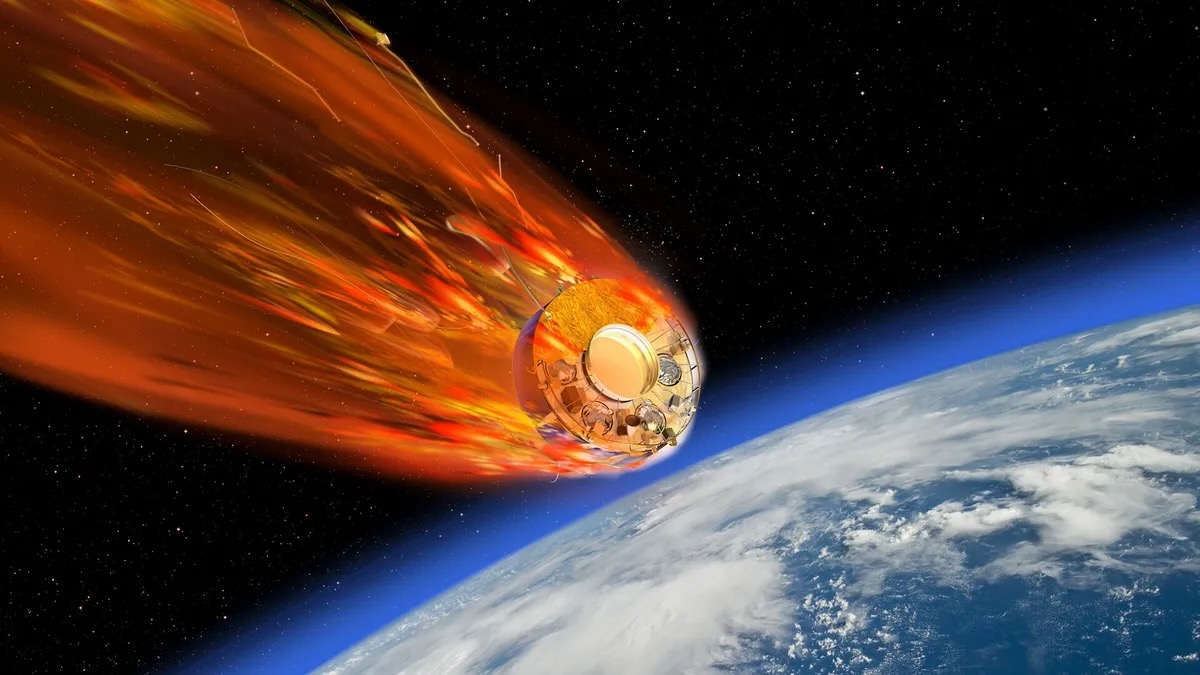Astronaut John Glenn: An American Hero's Greatest Moments Remembered
John Glenn: A Monumental Career
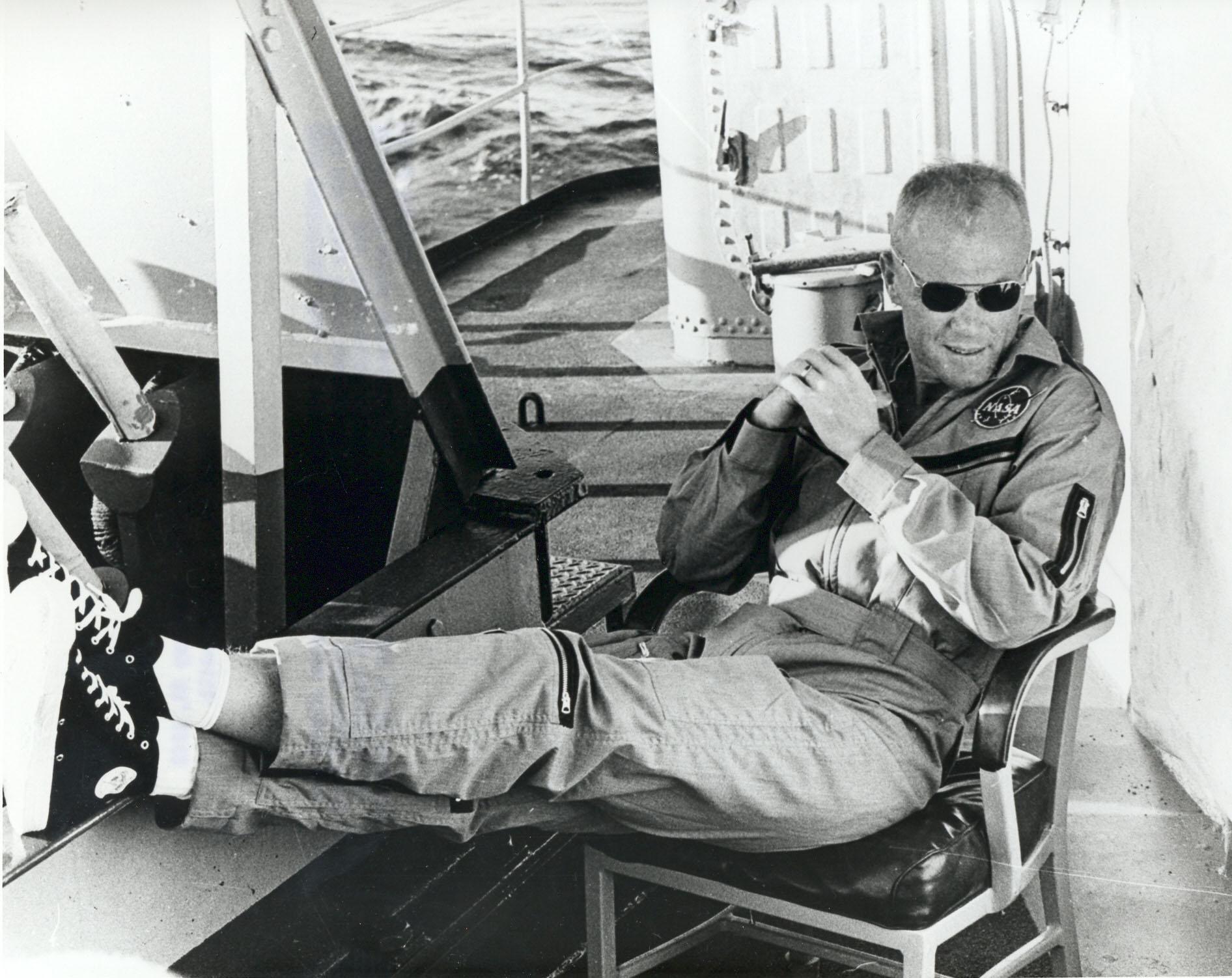
John H. Glenn was an American astronaut, Marine Corps Colonel, and U.S. Senator. A member of NASA's very first astronaut class (known as the Mercury 7), Glenn's first space mission was in 1962, when he became the first American to orbit the Earth. Glenn also holds the record for being the oldest person ever to go to space, having participated in space shuttle mission STS-95 at the age of 77 in 1998. Glenn is shown here during his career at NASA (image not dated).
Glenn passed away on Dec. 8, 2016, at the age of 95. Here are some of the highlights of his incredible career.
The Magnificent 7
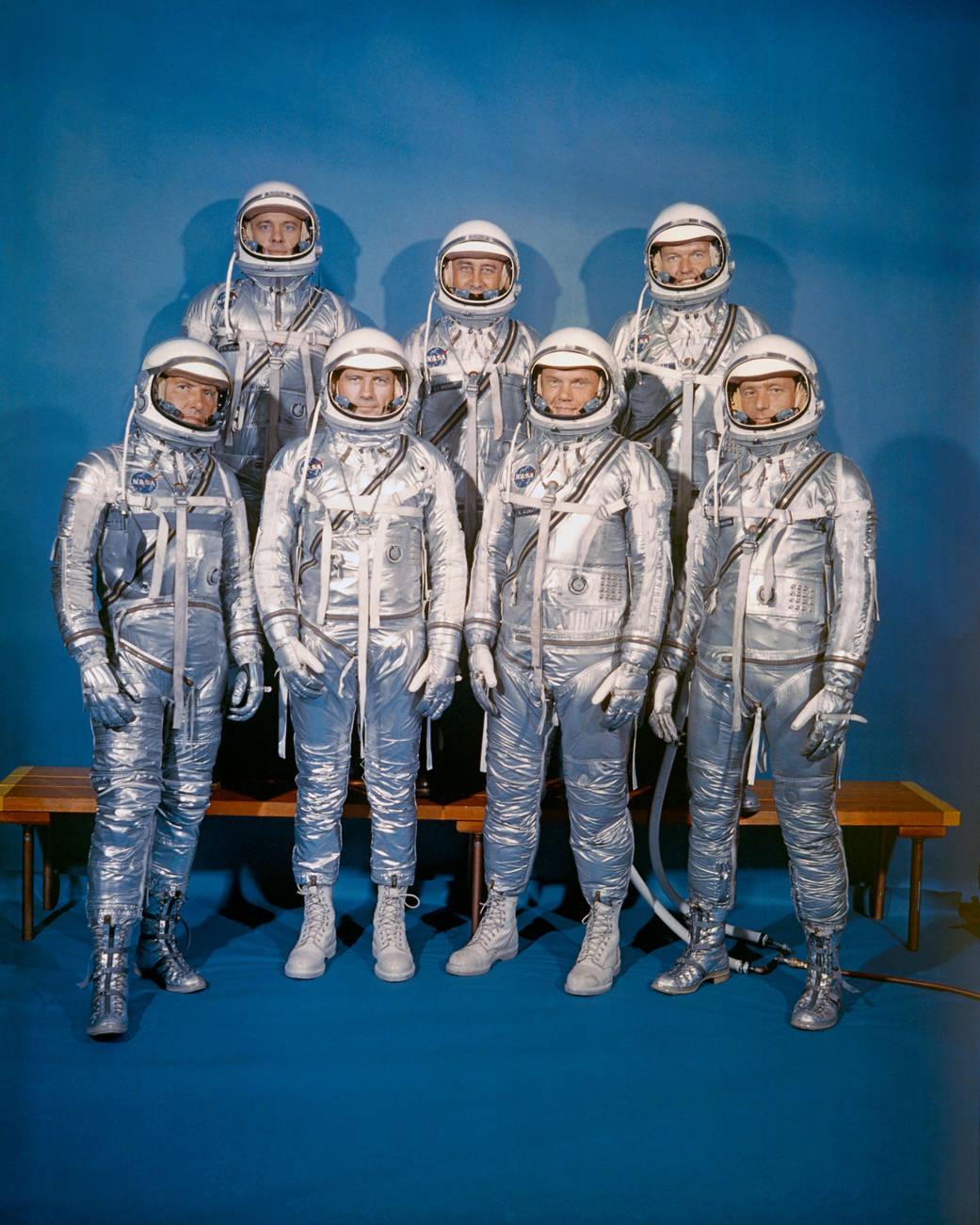
On April 9, 1959, John H. Glenn was one of seven men selected for NASA's first-ever astronaut class. Those astronauts, who became known as the Mercury 7, are pictured here: (Front row, left to right) Walter M. Schirra, Jr., Donald K. "Deke" Slayton, John H. Glenn, Jr., and M. Scott Carpenter; (Back row) Alan B. Shepard, Jr., Virgil I. "Gus" Grissom, and L. Gordon Cooper, Jr.
On May 5, 1961, Alan Shepard became the first American to go to space. Glenn served as backup for Shepard, as well as Grissom, who became the second American in space.
A plan to orbit
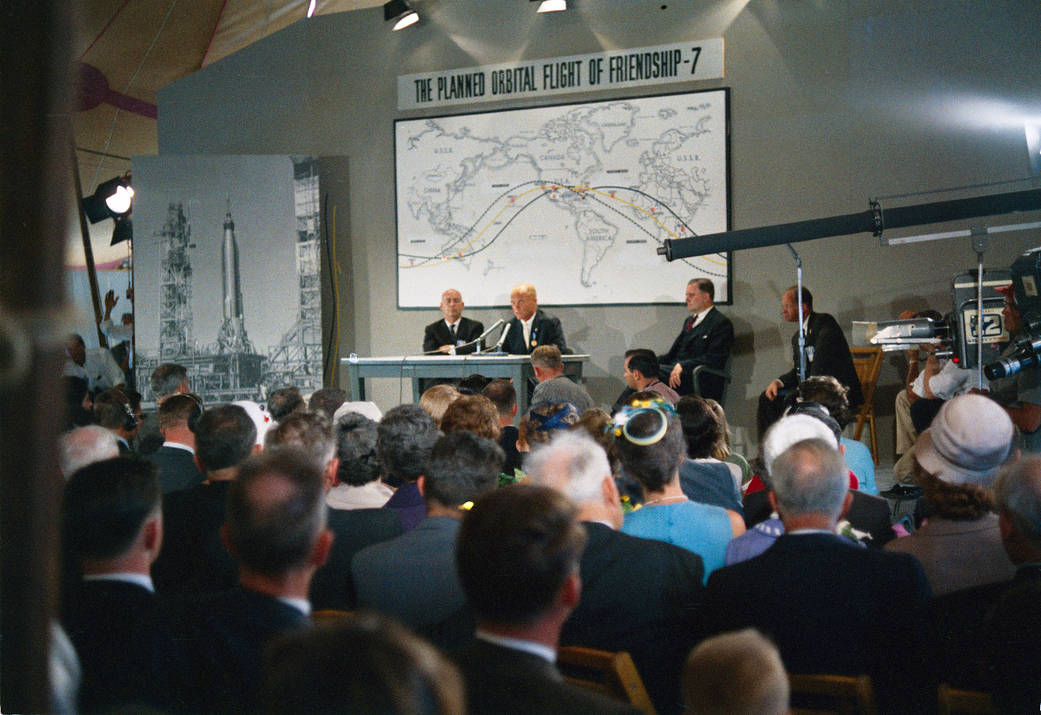
In November 1961, a NASA representative announced to the press that John Glenn had been chosen to make the first manned orbital flight for NASA. In this photo (undated) Glenn speaks to reporters prior to launch. The map on the wall shows the orbital flight path. The launch was originally set for Jan. 16, 1962, but was delayed for over a month due to various problems.
Up, up and away
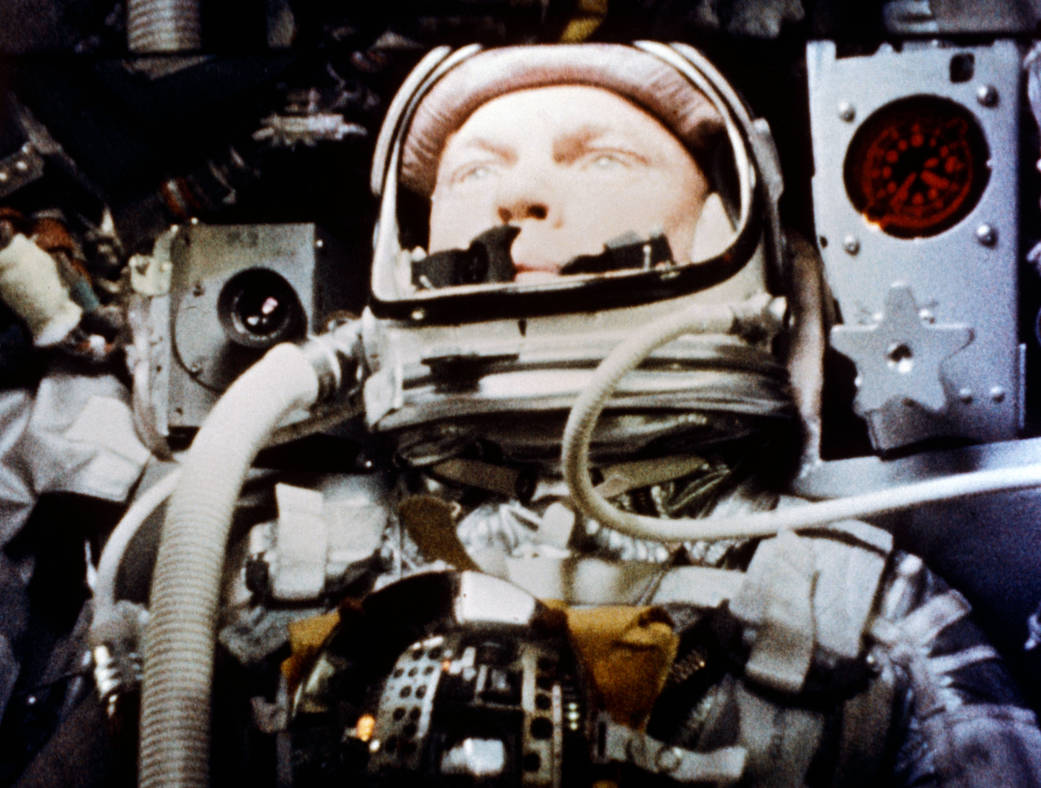
On Feb. 20, 1962, John Glenn became the first American to orbit the Earth. As the only crewmember on the Mercury-Atlas 6 (MA-6) mission, Glenn was launched into space by an Atlas LV-3B launch vehicle, inside the Friendship 7 space capsule. The spacecraft made three complete loops around the planet, with Glenn piloting parts of the last two orbits manually because of an autopilot failure. This photo of Glenn was taken with the onboard camera during the mission.
A hero, back on Earth
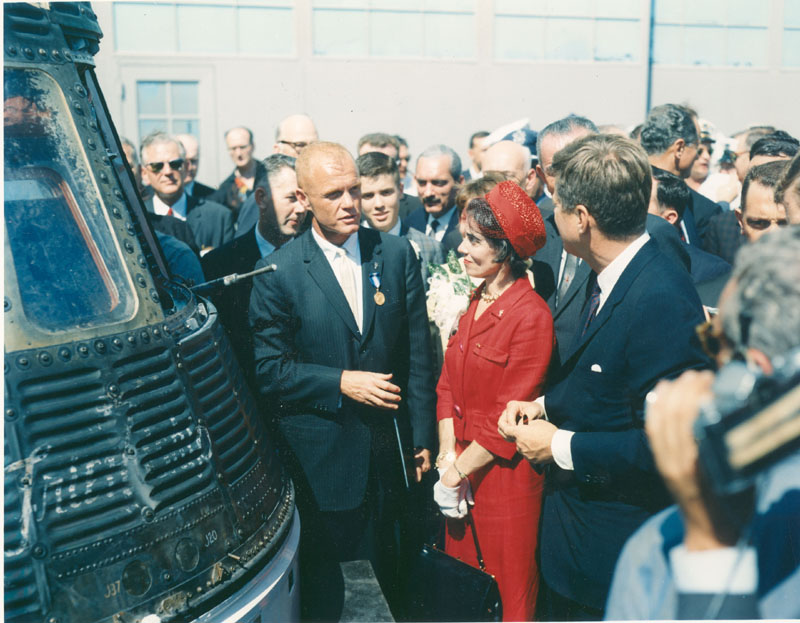
Upon his return to Earth, Glenn was treated as a national hero. Here, he is shown speaking with President John F. Kennedy (Glenn's wife, Annie, stands to his left). President Kennedy later presented Glenn with the NASA Distinguished Service Award. Glenn also addressed a joint session of Congress and participated in several ticker-tape parades around the country.
Up in the air
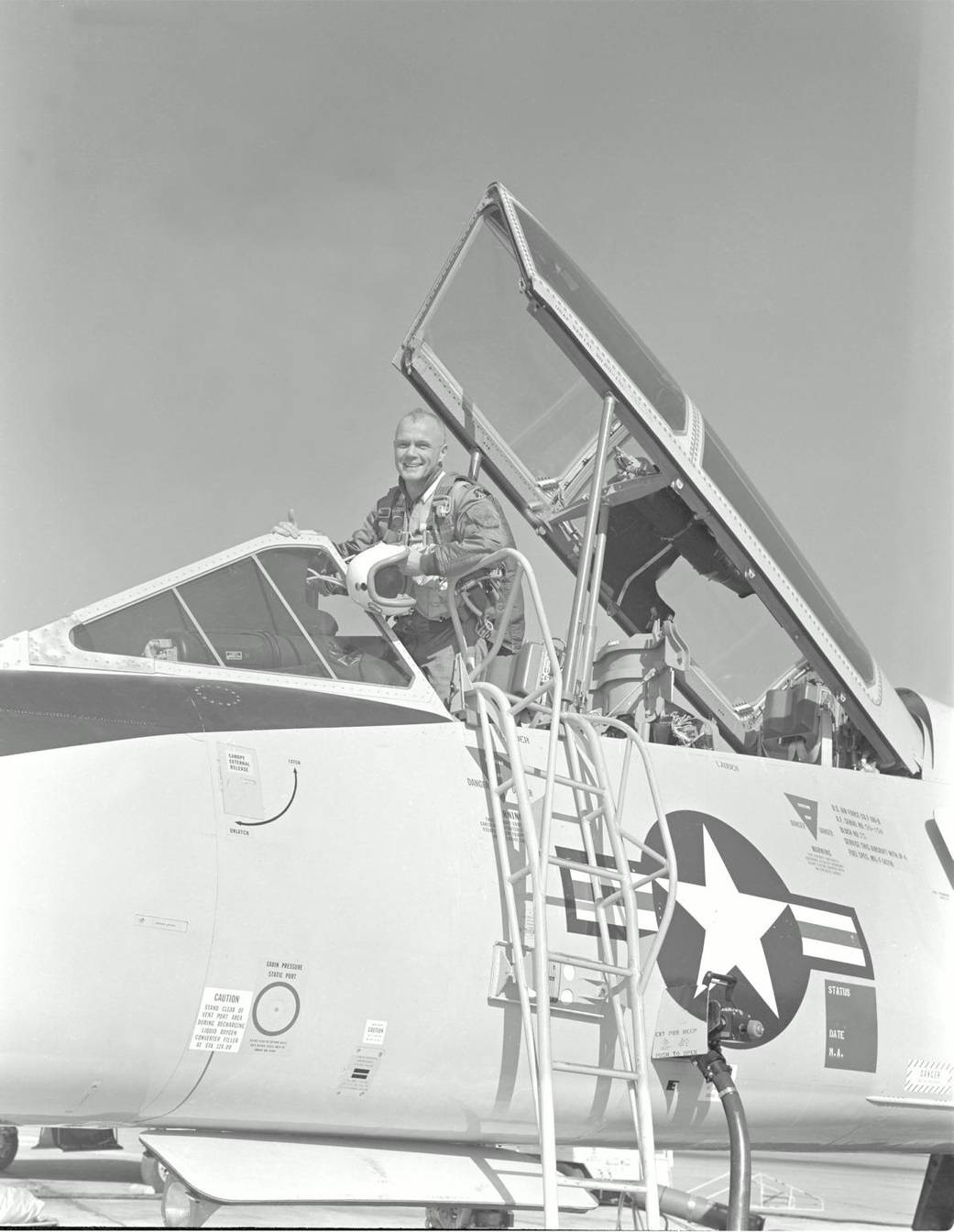
In addition to his accomplishments as an astronaut, Glenn had a prestigious military and flying career. During his World War II service, he flew 59 combat missions. He was awarded the Distinguished Flying Cross on six occasions, and holds the Air Medal with 18 Clusters for his service during World War II and the Korean War, among other military and government honors. He retired from the Marine Corps in January 1965 with the rank of Colonel.
"In July 1957, while project officer of the F8U Crusader, [Glenn] set a transcontinental speed record from Los Angeles to New York, spanning the country in 3 hours and 23 minutes. This was the first transcontinental flight to average supersonic speed," according to a biography of Glenn on NASA's website. "Glenn has nearly 9,000 hours of flying time, with approximately 3,000 hours in jet aircraft."
This image (undated) shows Glenn "in the cockpit of a T-106 preparing for training exercises in flight proficiency," according to NASA.
A life beyond NASA
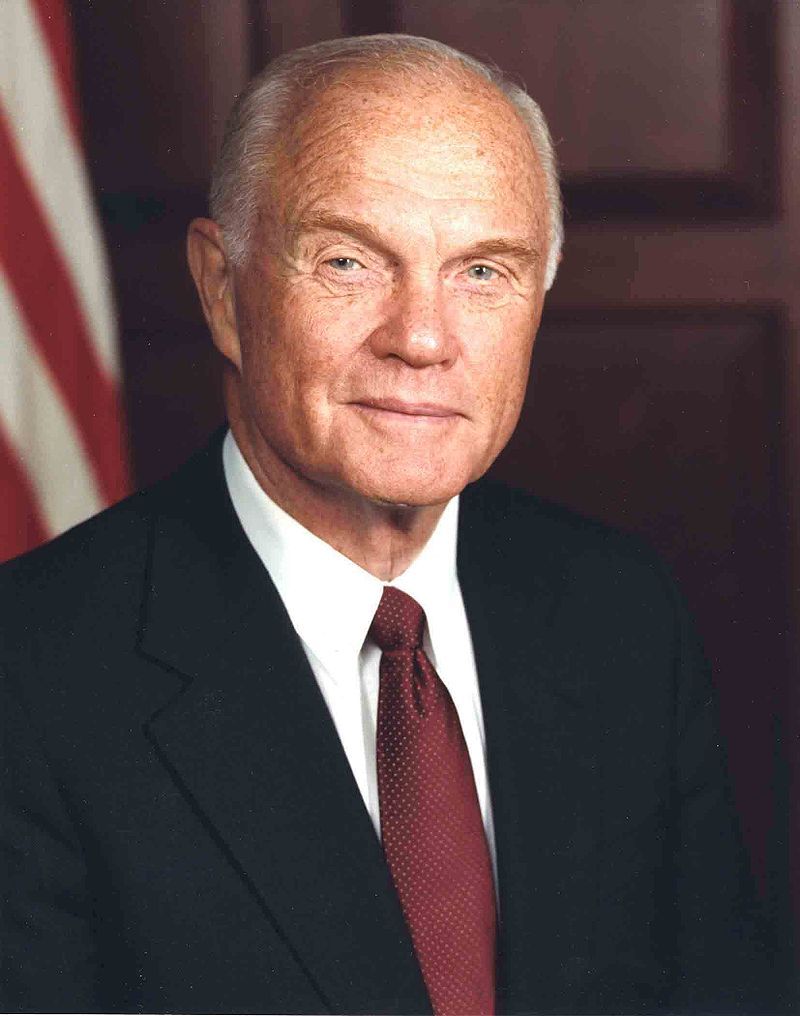
Glenn resigned from his job at NASA's Manned Spaceflight Center in January 1964. He worked in private business until 1974, when he was elected to the United States Senate, in his home state of Ohio. During his Senate career, Glenn campaigned for funding for science, education, and space exploration. In 1984, he made a failed bid for the Democratic presidential nomination. He retired from the U.S. Senate in January 1999.
Once more into the fray
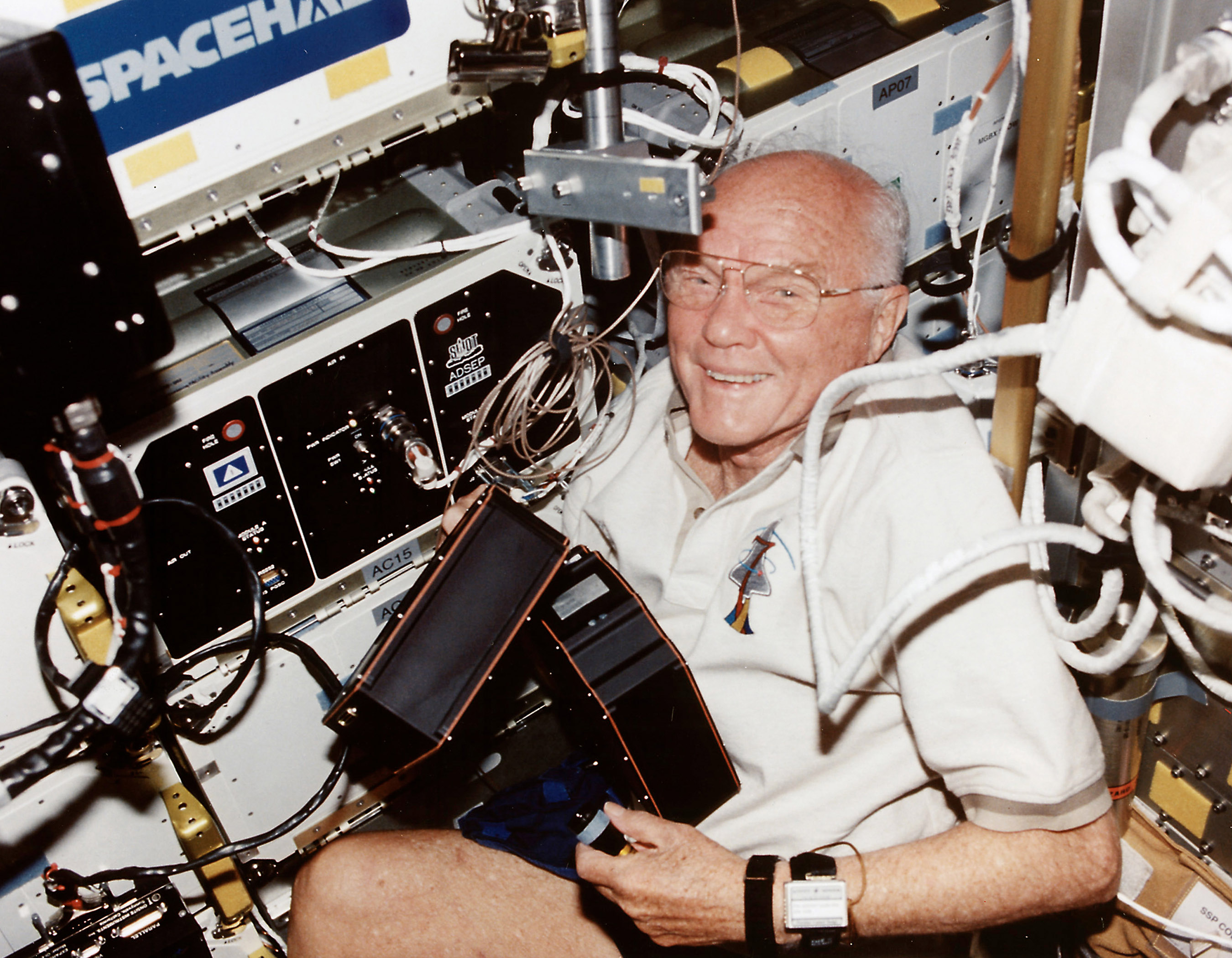
On Oct. 29, 1998, 36 years after his first historic flight, Glenn returned to space as a member of mission STS-95, aboard the space shuttle Discovery. He spent 9 days in orbit, and at the age of 77, became the oldest person ever to fly in space (a record that has yet to be broken). One of the science experiments carried out during the mission used Glenn as a subject: it looked at the effects of spaceflight on older humans. Glenn and the rest of the crew returned to Earth on Nov. 7, after 213 hours and 44 minutes in space.
A NASA legacy
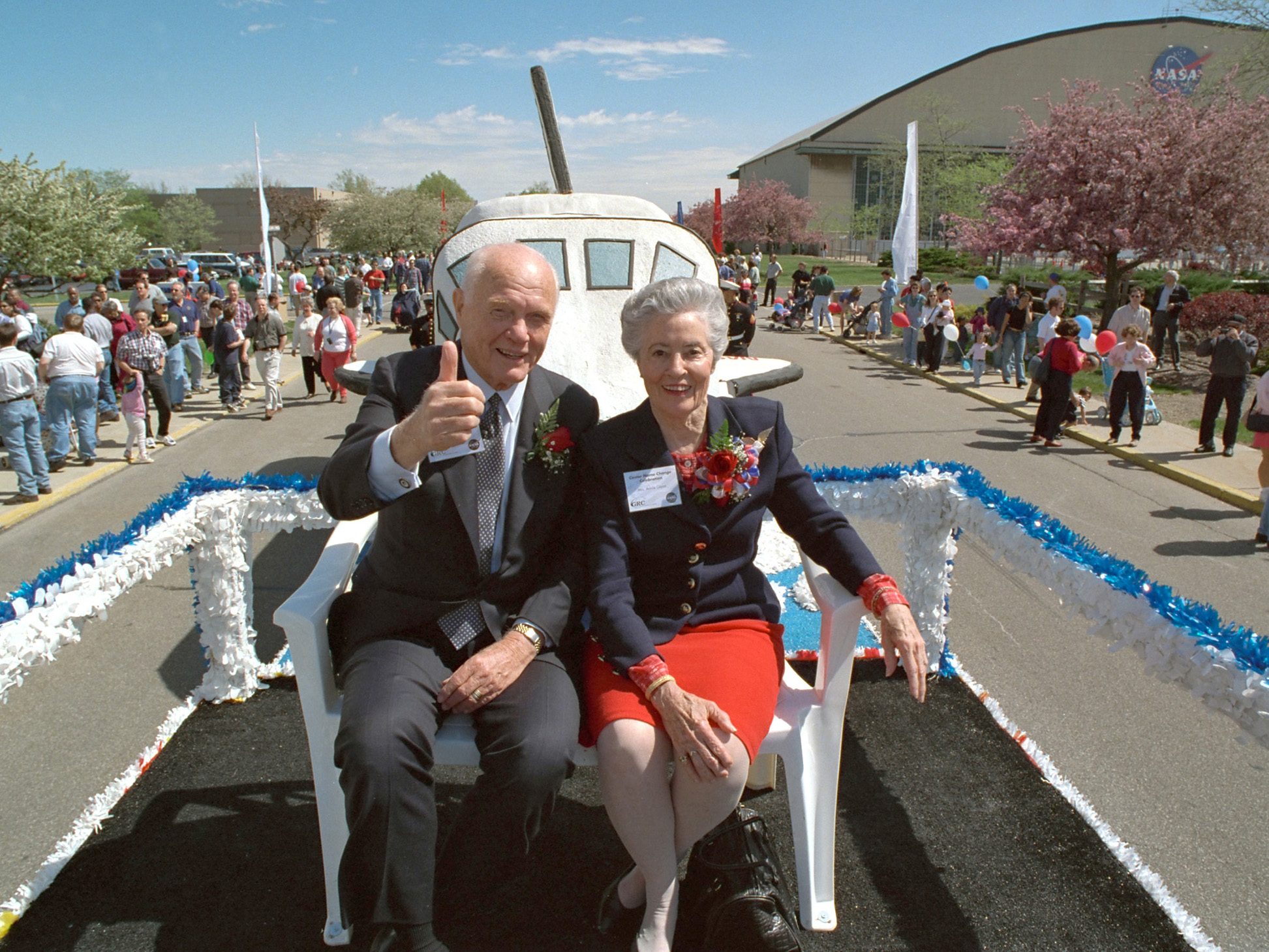
In May 1999, NASA's Lewis Space Research Center in Ohio was renamed The John H. Glenn Research Center at Lewis Field. To celebrate the occasion, the NASA center held a parade and a full day of activities. Shown here are John H. Glenn and his wife, Annie, during the parade to celebrate the renaming.
Join our Space Forums to keep talking space on the latest missions, night sky and more! And if you have a news tip, correction or comment, let us know at: community@space.com.
Get the Space.com Newsletter
Breaking space news, the latest updates on rocket launches, skywatching events and more!

Calla Cofield joined Space.com's crew in October 2014. She enjoys writing about black holes, exploding stars, ripples in space-time, science in comic books, and all the mysteries of the cosmos. Prior to joining Space.com Calla worked as a freelance writer, with her work appearing in APS News, Symmetry magazine, Scientific American, Nature News, Physics World, and others. From 2010 to 2014 she was a producer for The Physics Central Podcast. Previously, Calla worked at the American Museum of Natural History in New York City (hands down the best office building ever) and SLAC National Accelerator Laboratory in California. Calla studied physics at the University of Massachusetts, Amherst and is originally from Sandy, Utah. In 2018, Calla left Space.com to join NASA's Jet Propulsion Laboratory media team where she oversees astronomy, physics, exoplanets and the Cold Atom Lab mission. She has been underground at three of the largest particle accelerators in the world and would really like to know what the heck dark matter is. Contact Calla via: E-Mail – Twitter
